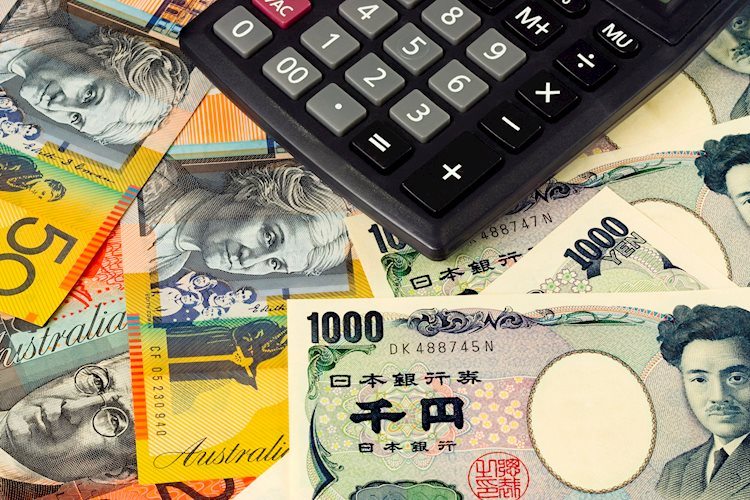- AUD/JPY remains steady as the Australian Dollar receives support from the hawkish mood surrounding the RBA.
- The Reserve Bank of Australia is widely anticipated to maintain the cash rate at 4.35% on Tuesday.
- The Japanese Yen may depreciate due to rising political and monetary policy uncertainties.
AUD/JPY extends its gains for the second consecutive day, trading around 100.40 during the early European hours on Monday. The Australian Dollar (AUD) receives support as the Reserve Bank of Australia (RBA) is expected to maintain the cash rate at 4.35% during Tuesday’s policy meeting, as underlying inflation, reflected in the trimmed mean, remains high. This anticipated hawkish stance from the RBA continues to support the Aussie Dollar, bolstering the AUD/JPY cross.
Additionally, the release of the Melbourne Institute’s Inflation Gauge data might have contributed support for the Australian Dollar. The TD-MI Inflation Gauge rose by 0.3% month-over-month in October, up from a 0.1% increase in the prior month, marking the highest reading since July and preceding the RBA’s November policy meeting. Annually, the gauge climbed by 3.0%, compared to the previous 2.6% reading.
In China, the Standing Committee of the National People’s Congress is meeting from November 4 to 8, during which it is expected to approve additional stimulus measures aimed at bolstering the slowing economy. Any additional measures taken could have a positive impact on Australian markets as both countries are close trade partners.
On Sunday, China’s Commerce Minister Wang Wentao met with Australia’s Trade Minister Don Farrell. China expressed hopes that Australia will continue enhancing its business environment and ensure fair and equitable treatment for Chinese companies.
Japanese markets are closed for the Sports Day holiday, halting physical trading of US Treasuries and slightly limiting JPY liquidity. The Japanese Yen may face weakness as political and monetary policy uncertainties rise, following last week’s parliamentary majority win by the Liberal Democratic Party (LDP) coalition, which has led to questions about the Bank of Japan’s (BOJ) future policy stance.
In a briefing last Thursday, BoJ Governor Kazuo Ueda noted that economic risks in the US appear to be easing, potentially opening the door for a future rate hike. Meanwhile, as expected, the Bank of Japan maintained its policy rate at 0.25%.



